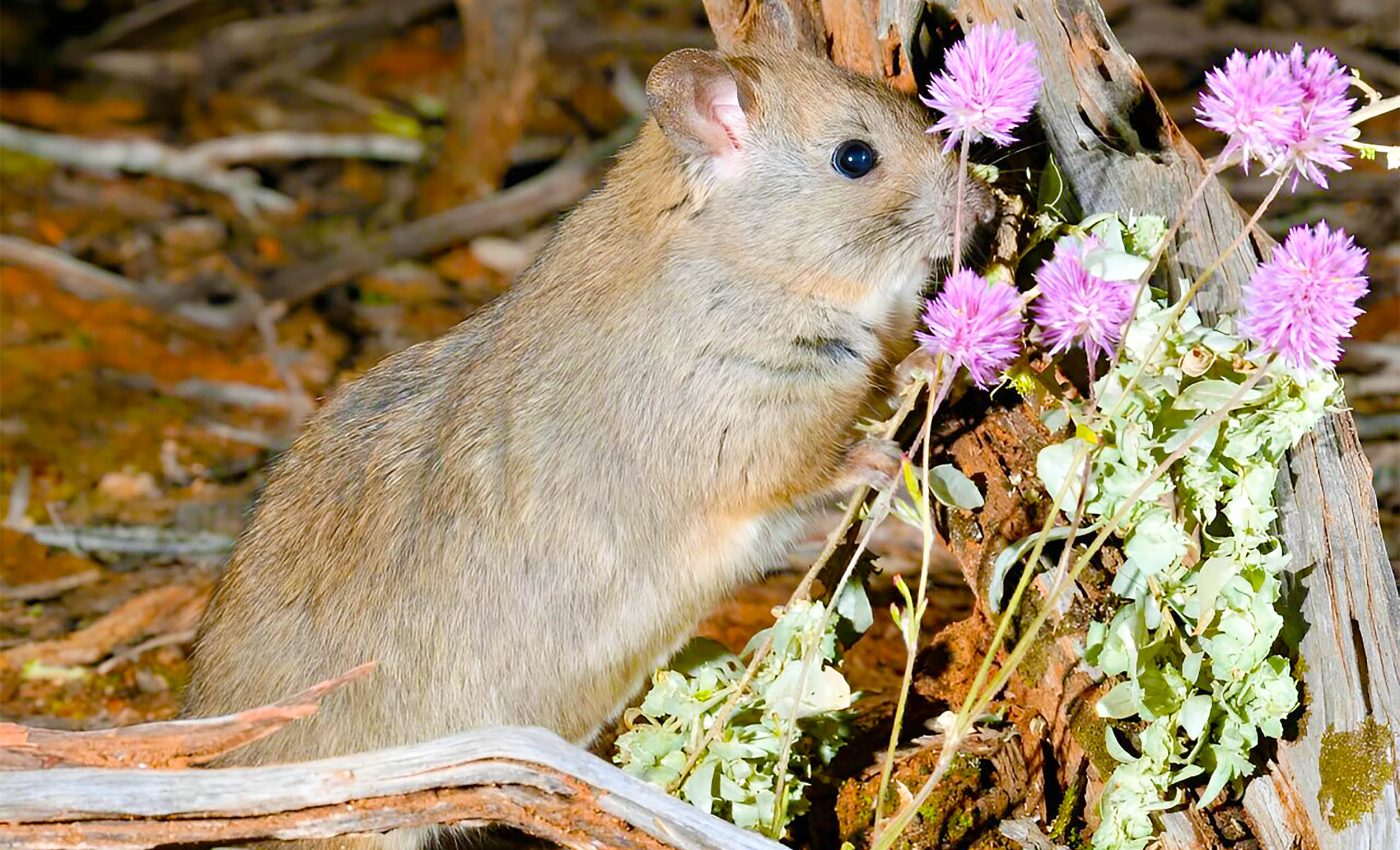
Endangered rat strangely uses invasive weed for food and shelter
In the vast and diverse world of biodiversity, unexpected alliances sometimes form. In Australia’s wilderness, a curious bond has developed between an endangered rat and an invasive weed.
Off the coast of Port Lincoln, South Australia, lies Reevesby Island. It is home to an endangered creature, the greater stick-nest rat, and an invasive weed, the African boxthorn.
A recent study reveals an intriguing twist to this survival narrative – our threatened rodent seems to prefer the invasive weed to native vegetation.
The research was led by Annie Kraehe, a Ph.D. candidate at the College of Science and Engineering, Flinders University.
Together with scientists from both Flinders University and the University of Adelaide, she unearthed this surprising secret.
Invasive weed in rat feces
Kraehe spent weeks examining the fecal pellets of the stick-nest rat. It was here she discovered the key evidence – plant remnants from the boxthorn shrub.
This small, inconspicuous animal was feeding on one of Australia’s most invasive weeds.
Despite the boxthorn accounting for just over a tenth of available vegetation, it made up over half of the rat’s diet.
Further observations revealed that the stick-nest rat’s presence was more predominant in areas with higher boxthorn abundance.
The timid rodent wasn’t just dining on the boxthorn, it was using it for nesting and shelter too.
A bittersweet revelation
Flinders University Associate Professor Vera Weisbecker, a co-author on the study, underscores the strangeness of this discovery.
Invasive weeds like the boxthorn pose a significant threat to Australia’s biodiversity. It’s certainly unexpected to find our endangered rodent thriving in this supposedly degraded habitat.
Greater stick-nest rats build large communal homes out of sticks and stones. These guinea pig-sized rodents were declared extinct on mainland Australia by 1930, primarily due to invasive predators like cats and foxes.
Now, the only existing wild populations are confined to offshore islands, out of the reach of such predators. But danger still lurks in the form of predatory birds.
With its dense foliage, the African boxthorn provides excellent cover from these raptors. This, according to Weisbecker, might be why the rats prefer nesting in boxthorn thickets.
It’s a survival strategy that’s not just limited to our furry friend – the little penguins of South Australia also find better protection from predators in boxthorn vegetation.
Benefit Or detriment?
As one of Australia’s most notorious weeds, African boxthorn disrupts wildlife and livestock movement and often prevents access to water sources due to its formidable thorns and dense, impenetrable thickets.
But perhaps these exact characteristics make it appealing to the greater stick-nest rat?
Yet, the researchers caution against seeing this as some sort of redemption for the invasive weed. Their findings merely depict the rat’s use of the boxthorn.
“We merely show that African boxthorn is being used by stick-nest rats. Further research is needed to understand if the animal actually benefits from the weed, and how this potential benefit compares to the destructive effects on the rest of the ecosystem,” says Kraehe.
“The fact that the stick-nest rat is flexible enough in its food choices to thrive on African boxthorn is encouraging for efforts to re-establish the species elsewhere.
There’s also the significant concern that the continued spread of the boxthorn could displace native vegetation, leading to the collapse of the island’s ecosystem, and ultimately affecting the rats themselves.
Balance between rats and invasive weed
As researchers delve deeper into this dynamic, the relationship between the greater stick-nest rat and African boxthorn serves as a compelling case study in ecosystem interactions.
The delicate balance between an endangered species and an invasive plant highlights the complexities of ecological systems, where species adapt to their surroundings in unexpected ways.
The boxthorn provides shelter and food. However, its rapid growth could endanger the stick-nest rat’s survival. This proliferation also threatens other native plants and animals that depend on indigenous vegetation.
Understanding these complex relationships is essential for creating conservation strategies that protect biodiversity.
Looking ahead
Flexibility in dietary choices, according to Kraehe, is a positive sign for the stick-nest rat. It opens up possibilities for re-establishing the species elsewhere.
However, more research is needed to understand the ideal food plants and habitats for this rare rodent.
This remarkable partnership between a threatened rat and an invasive weed invites deeper probing into the resilience of Australia’s unique fauna.
But it also crystallizes the sheer unpredictability and complexity of ecosystems and the creatures that inhabit them.
The study is published in the journal Wildlife Research.
—–
Like what you read? Subscribe to our newsletter for engaging articles, exclusive content, and the latest updates.
Check us out on EarthSnap, a free app brought to you by Eric Ralls and Earth.com.
—–













